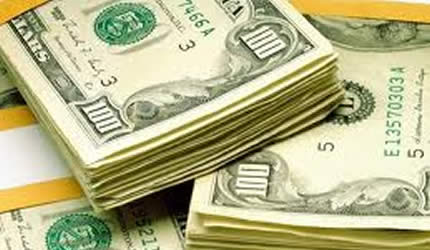Private sector credit declines

 TOTAL credit to the private sector declined 2,3 percent to $3,56 billion in January from $3,65 billion in December with 84 percent of that amount going towards loans and advances.
TOTAL credit to the private sector declined 2,3 percent to $3,56 billion in January from $3,65 billion in December with 84 percent of that amount going towards loans and advances.
According to the Reserve Bank of Zimbabwe, monthly economic review for January, the slowdown in credit reflects shallow lending by banks on the back of liquidity challenges, constrained deposit base and increasing non-performing loans.
The economy has slowed down and this has affected demand, credit and activity across all industry. The country last week officially slipped into deflation as opposed to when it has been in disinflation over the last few years. Deflation periods are typically associated with downturns in the economy.
According to ZimStat, inflation shed 0,9 percentage points to -0,49 percent from 0,41 percent in January. The month-on-month inflation rate in February was 0,05 percent, from 0,14 percent in January. The RBZ said the annual growth in credit to the private sector, which had been on a downward trend further declined 0,2 percent in January 2014.
Private sector credit is comprised of loans and advances (84 percent), mortgages (11 percent), bankers’ acceptances (1 percent), bills discounted (2 percent) and other investments (2,14 percent).
Outstanding loans and advances were extended mainly to households (18,70 percent), agriculture (18,46 percent), distribution (17,87 percent) and manufacturing (14,54 percent).
Loans and advances were at $2,38 billion in January, a 0,91 percent decrease from last December’s $2,40 billion. Credit was mainly utilised for asset purchases (44,20 percent) as well as inventory build-up (33,67 percent).
“Loans and advances used for fixed investments activity have remained low, with the procurement of plant and equipment accounting for 3,52 percent and pre-and post shipment financing at 1,09 percent,” said RBZ.
Money supply grew 2,1 percent but broad money declined $43,7 million (-1,1 percent) after contractions of $488 million in over 30-day deposits and $77,2 million in savings deposits.
“Partially offsetting these were increases of $116,8 million and $4,7 million in demand and under 30-day deposits.”
The weak growth in deposits continues to mirror the under-performance of the external sector.
“With the RBZ incapacitated to influence liquidity levels in the economy, money supply levels are reflective of the balance of payments position.”
Of the total money supply, Government deposits made up 3,6 percent or $141,8 million but the majority was demand deposits at 53,4 percent.
Savings deposits were at 12,1 percent.
Total deposits were at $3,43 billion from $3,3 billion in December.
The central bank also said the value of transactions processed through the RTGS system in January 2014 was down 10 percent to $3,1 billion from $3,4 billion in December while there was a 1 percent increase in transactions in the period.
Card-based transactions were 15,30 percent lower to $335,36 million. Mobile and internet based transactions decreased 12 percent to $296,56 million from $395,95 million. The value of cheque transactions rose to $5,24 million in January from $4,04 million. – FinX.







Comments